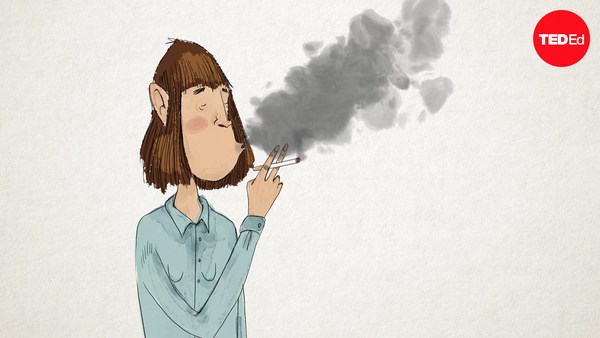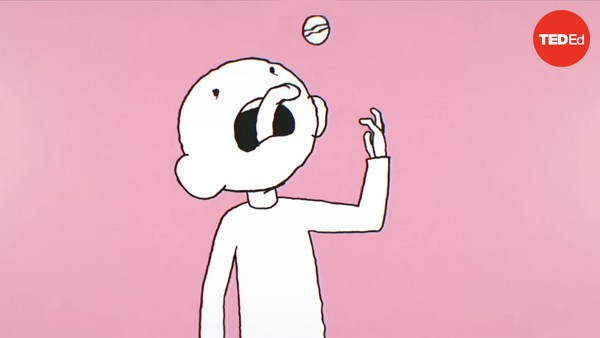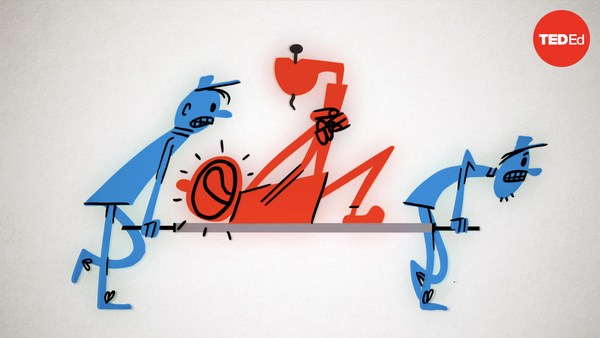In 1970, marijuana was classified as a schedule 1 drug in the United States: the strictest designation possible, meaning it was completely illegal and had no recognized medical uses. For decades, this view persisted and set back research on the drug's mechanisms and effects. Today, marijuana’s therapeutic benefits are widely acknowledged, and some nations have legalized medical use or are moving in that direction. But a growing recognition for marijuana’s medical value doesn’t answer the question: is recreational marijuana use bad for your brain?
Marijuana acts on the body’s cannabinoid system, which has receptors all over the brain and body. Molecules native to the body, called endocannabinoids, also act on these receptors. We don’t totally understand the cannabinoid system, but it has one feature that provides a big clue to its function. Most neurotransmitters travel from one neuron to the next through a synapse to propagate a message. But endocannabinoids travel in the opposite direction. When a message passes from the one neuron to the next, the receiving neuron releases endocannabinoids. Those endocannabinoids travel backward to influence the sending neuron— essentially giving it feedback from the receiving neuron. This leads scientists to believe that the endocannabinoid system serves primarily to modulate other kinds of signals— amplifying some and diminishing others.
Feedback from endocannabinoids slows down rates of neural signaling. That doesn’t necessarily mean it slows down behavior or perception, though. For example, slowing down a signal that inhibits smell could actually make smells more intense.
Marijuana contains two main active compounds, tetrahydrocannabinol or THC, and cannabidiol, or CBD. THC is thought to be primarily responsible for marijuana’s psychoactive effects on behavior, cognition, and perception, while CBD is responsible for the non-psychoactive effects. Like endocannabinoids, THC slows down signaling by binding to cannabinoid receptors. But it binds to receptors all over this sprawling, diffuse system at once, whereas endocannabinoids are released in a specific place in response to a specific stimulus.
This widespread activity coupled with the fact that the cannabinoid system indirectly affects many other systems, means that each person’s particular brain chemistry, genetics, and previous life experience largely determine how they experience the drug. That’s true much more so with marijuana than with other drugs that produce their effects through one or a few specific pathways. So the harmful effects, if any, vary considerably from person to person. And while we don’t know how exactly how marijuana produces specific harmful effects, there are clear risk factors that can increase peoples’ likelihood of experiencing them.
The clearest risk factor is age. In people younger than 25, cannabinoid receptors are more concentrated in the white matter than in people over 25. The white matter is involved in communication, learning, memory, and emotions. Frequent marijuana use can disrupt the development of white matter tracts, and also affect the brain’s ability to grow new connections. This may damage long-term learning ability and problem solving. For now, it’s unclear how severe this damage can be or whether it’s reversible. And even among young people, the risk is higher the younger someone is— much higher for a 15 year old than a 22 year old, for instance.
Marijuana can also cause hallucinations or paranoid delusions. Known as marijuana-induced psychosis, these symptoms usually subside when a person stops using marijuana. But in rare cases, psychosis doesn’t subside, instead unmasking a persistent psychotic disorder. A family history of psychotic disorders, like schizophrenia, is the clearest, though not the only, risk factor for this effect. Marijuana-induced psychosis is also more common among young adults, though it’s worth noting that psychotic disorders usually surface in this age range anyway. What’s unclear in these cases is whether the psychotic disorder would have appeared without marijuana use— whether marijuana use triggers it early, is a catalyst for a tipping point that wouldn’t have been crossed otherwise, or whether the reaction to marijuana is merely an indication of an underlying disorder. In all likelihood, marijuana’s role varies from person to person.
At any age, as with many other drugs, the brain and body become less sensitive to marijuana after repeated uses, meaning it takes more to achieve the same effects. Fortunately, unlike many other drugs, there’s no risk of fatal overdose from marijuana, and even heavy use doesn’t lead to debilitating or life-threatening withdrawal symptoms if use stops. There are more subtle forms of marijuana withdrawal, though, including sleep disturbances, irritability, and depressed mood, which pass within a few weeks of stopping use.
So is marijuana bad for your brain? It depends who you are. But while some risk factors are easy to identify, others aren’t well understood— which means there’s still some possibility of experiencing negative effects, even if you don’t have any of the known risk factors.


